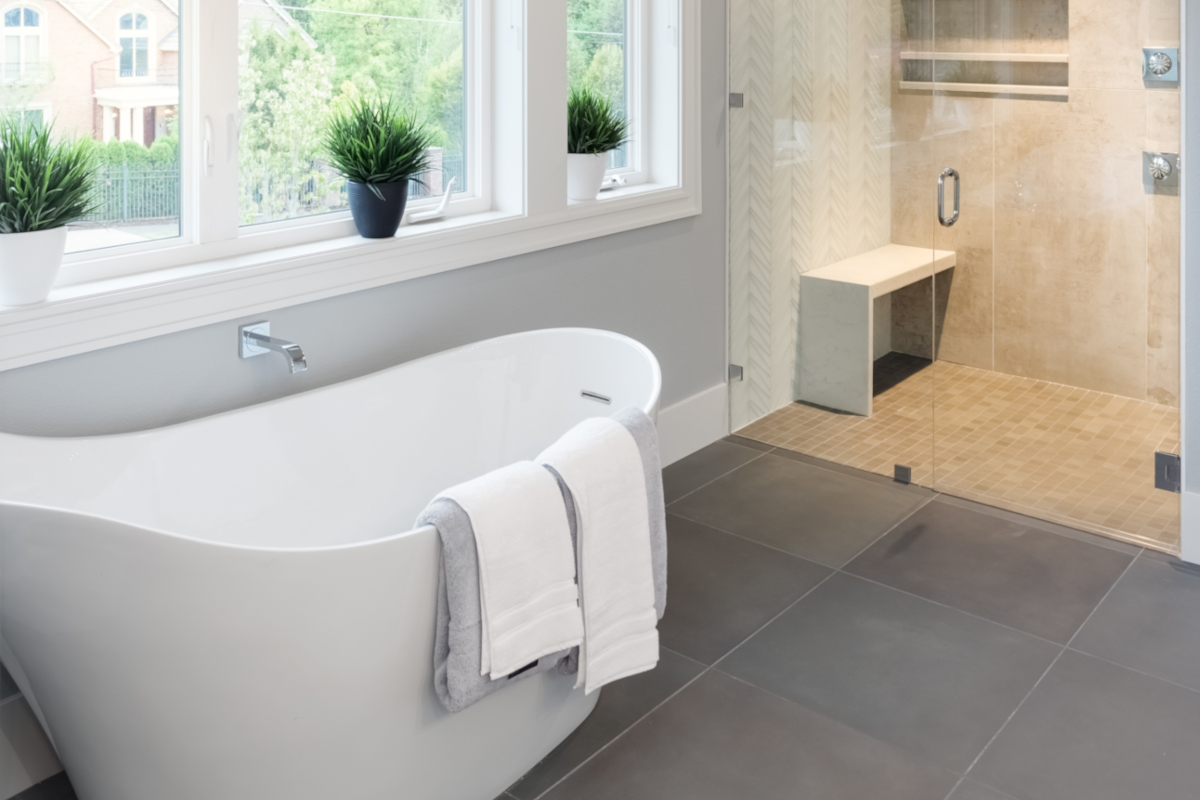We may earn revenue from the products available on this page and participate in affiliate programs. Learn More ›
Whether you are remodeling an existing bathroom or adding a new one to your home, the type of bathtub you install can be a key decision. Not only are there numerous bathtub styles to choose from, but there are also important practicalities to consider, such as tub size, plumbing requirements, and accessibility. Plus, different types of bathtub materials can impact a room’s style and the project’s overall budget.
There are types of bathtubs to suit every need, from the classics of yesteryear to clean contemporary designs. Have a look at the quick and easy guide to bathtub types below to learn about some of our favorites.
RELATED: How Much Does It Cost to Replace a Bathtub?
1. Freestanding Bathtub
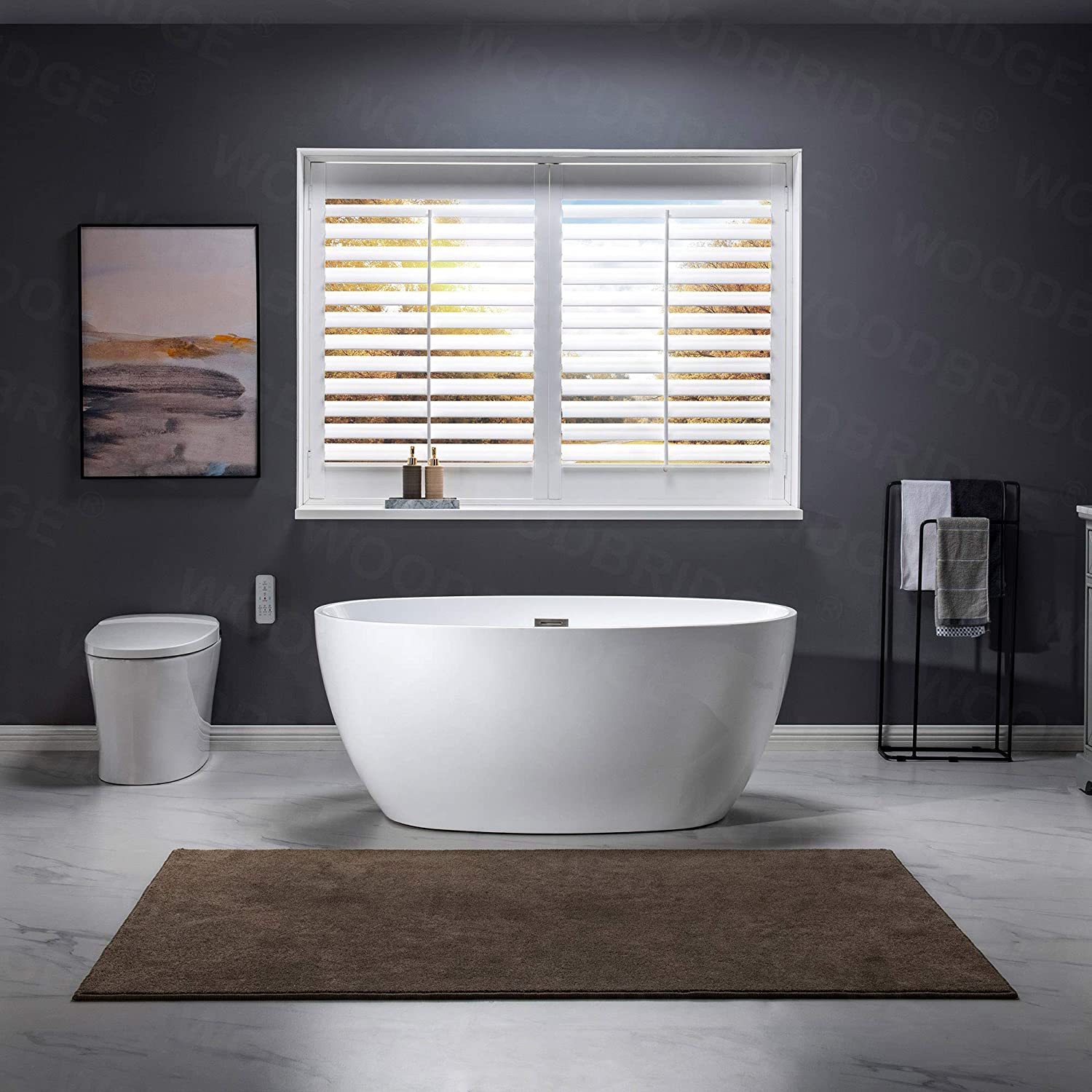
Freestanding bathtubs are the oldest design of the bunch, dating back to when metal and porcelain tubs were still commonly used. In recent years, freestanding bathtubs have had a resurgence and now rank among the most popular styles.
Like most modern bathtubs, freestanding tubs nowadays generally use a strong mix of acrylic and fiberglass (though copper and porcelain-enameled iron versions are still available). Most freestanding tubs can be found in sleek, rounded soaking tub styles.
Freestanding tubs are simple, but they usually don’t include a provision for faucets. For this reason, water supply and waste outlet installation will require careful consideration and planning to maintain an uncluttered appearance.
Best For: Place a freestanding tub in an open bathroom with enough space to make it a focal point.
Our Recommendation: WOODBRIDGE B1418-B/N-Drain &O Bathtub – Get on Amazon for $761.81
WOODBRIDGE’s freestanding bathtub, voted “best overall” in our researched guide to the best bathtubs, is a spacious soaking tub with clean contemporary lines and brushed nickel accents.
2. Alcove Bathtub
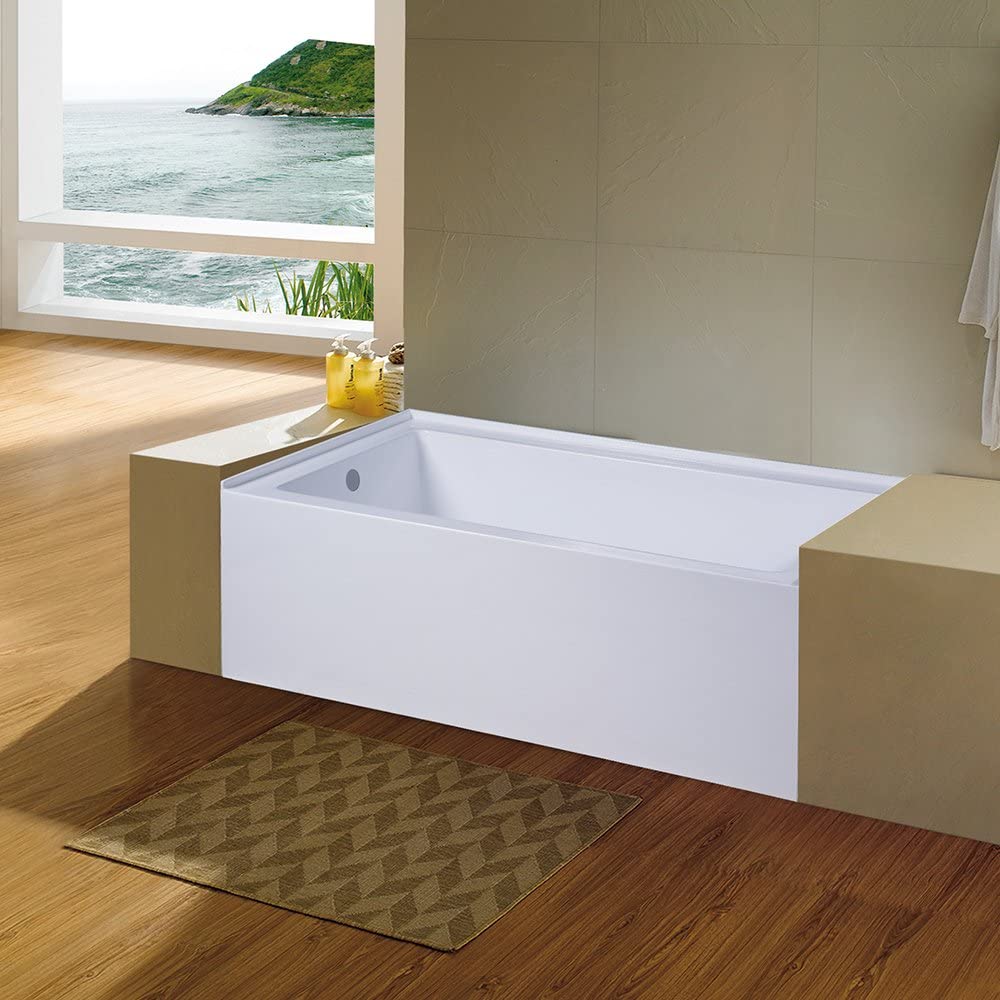
Alcove bathtubs are often found in homes where space comes at a premium. They’re sometimes added when retrofitting existing bathrooms, or they might be part of a new extension or guest bathroom design. As the name suggests, alcove tubs are walled in on three sides. They can be combined with a shower, which can be fitted centrally or at either end.
While frequently seen as a basic but affordable solution, the alcove area provides ample tiling or paneling opportunities to add a touch of luxury. Alcove bathtubs are seldom large, as the standard length is 60 inches. If a smaller tub is needed for an existing alcove, they’re thankfully not difficult to find.
Best For: Modest bathrooms or existing alcoves are ideal spots for an alcove tub.
Our Recommendation: Kingston Brass Aqua Eden Alcove Tub – Get on Amazon for $499.88
An easy-to-install and budget-friendly 60-inch alcove tub, this Kingston Brass option is available with a right-hand or left-hand drain.
3. Drop-In Bathtub
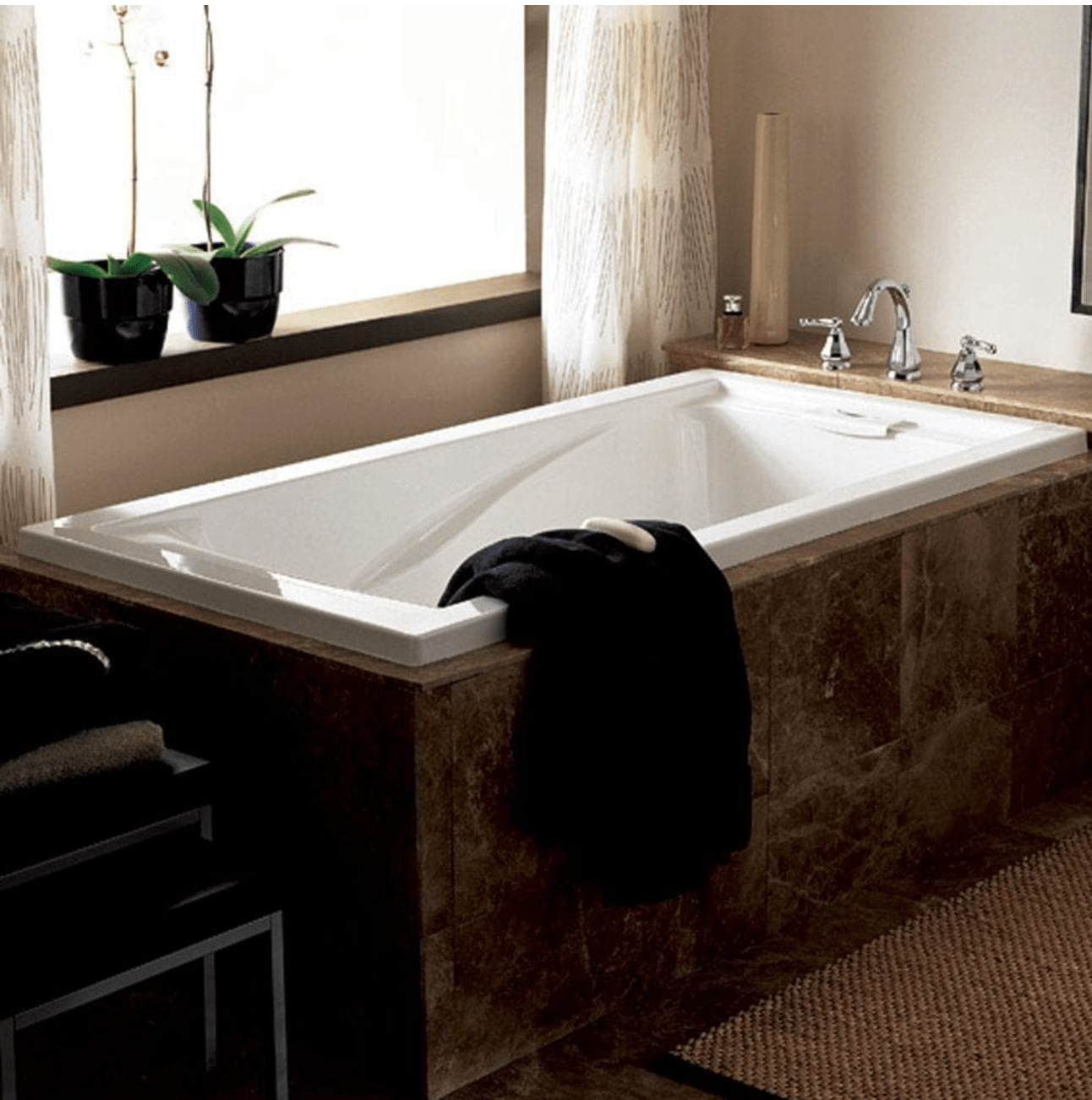
Drop-in bathtubs are highly versatile in terms of size, location, and style. This is because they come without a frame, so a surround needs to be constructed around them. This enclosure must be strong enough to support the tub when it’s full of water, but it’s the surround that gives drop-in tubs the bulk of their flexibility.
A drop-in tub surround can be built across a narrow bathroom, into an oddly sized alcove, or as a stand-alone structure in a room. Since they have their own rim, these tubs can also be sunken into the floor.
The width of a drop-in tub surround can be fully customized, so they can house faucets or simply serve as a convenient place to place bath products, candles, or a wine glass. Although some options are priced competitively, installing a drop-in tub can potentially be expensive.
Best For: Drop-in tubs can be built into alcoves, the ends of a room, or as a bathroom centerpiece.
Our Recommendation: American Standard Evolution Bathtub – Get at The Home Depot for $758.55
A roomy 72-inch American Standard soaking bathtub, it has a slip-resistant floor, lumbar support, and molded armrests.
4. Corner Bathtub

As made clear by its name, a corner tub is primarily designed to fit in the corner of a room. They usually require two supporting walls, though there are drop-in versions that can be built into a raised deck.
Normally measuring between 55 and 65 inches wide, corner bathtubs make excellent use of space. However, they are still considerably wider than most tubs, typically making them inappropriate for compact spaces. Some larger corner tub models are spacious enough for two and often fitted with relaxing jets.
Due to their size, corner tubs tend to be more expensive. It can be a challenge to combine them with a shower, so a shower stall would likely need to be installed separately.
Best For: Corners or raised areas in larger bathrooms are the best places for a corner tub.
Our Recommendation: Spa Escapes St. Barts Corner Soaking Bathtub – Get on Wayfair for $969.99
Spa Escapes’ spacious corner bathtub has a molded non-slip floor and a generous soaking depth.
RELATED: The Big Bathroom Remodeling Design Decision: Tub vs. Shower
5. Tub and Shower Combo
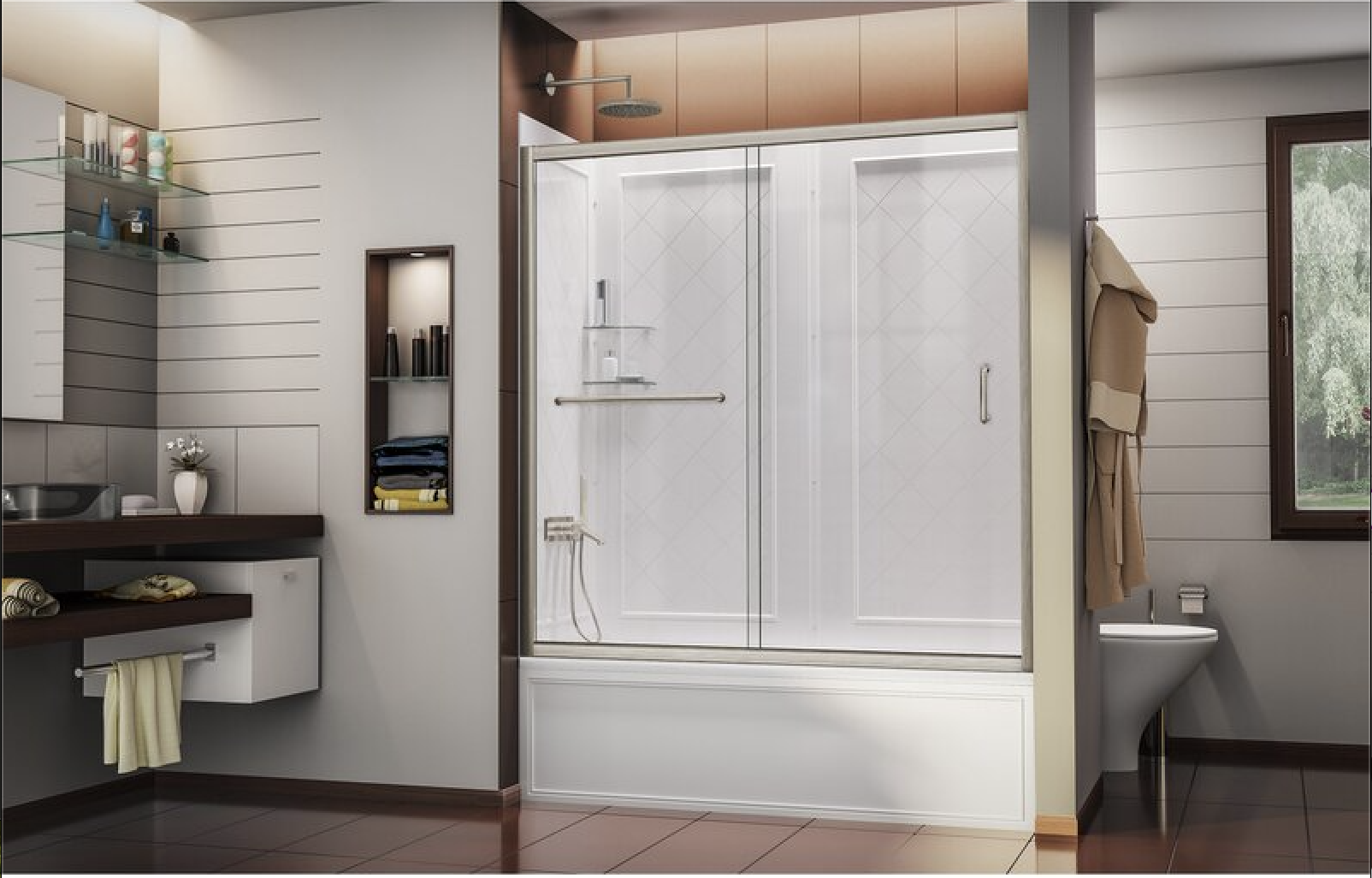
Fitting a shower over an alcove tub is a common practice, but a bathtub and shower combo can be more convenient, space-saving, and easier to install.
These all-in-one, often alcove-style kits consist of a tub and three surrounding walls made from a single acrylic or resin and fiberglass molding. Shelves are sometimes also incorporated, but a door or shower curtains may not be included.
Another type of tub and shower combo offers a bathtub, clear safety glass doors, and a wall panel kit. Any shelves and grab/towel bars are often accented in chrome or nickel. In most cases, a shower head—like the faucets—will need to be purchased separately.
Best For: These are well-suited to bathrooms in which a separate tub and shower isn’t desired or practical.
Our Recommendation: DreamLine Infinity Bath & Shower Kit – Get on Wayfair for $1,329.99
This DreamLine tub and shower combo includes a comfortable 60-inch alcove bathtub with tempered safety glass doors, glass shelves, grab bar, and towel bar.
6. Clawfoot Tub
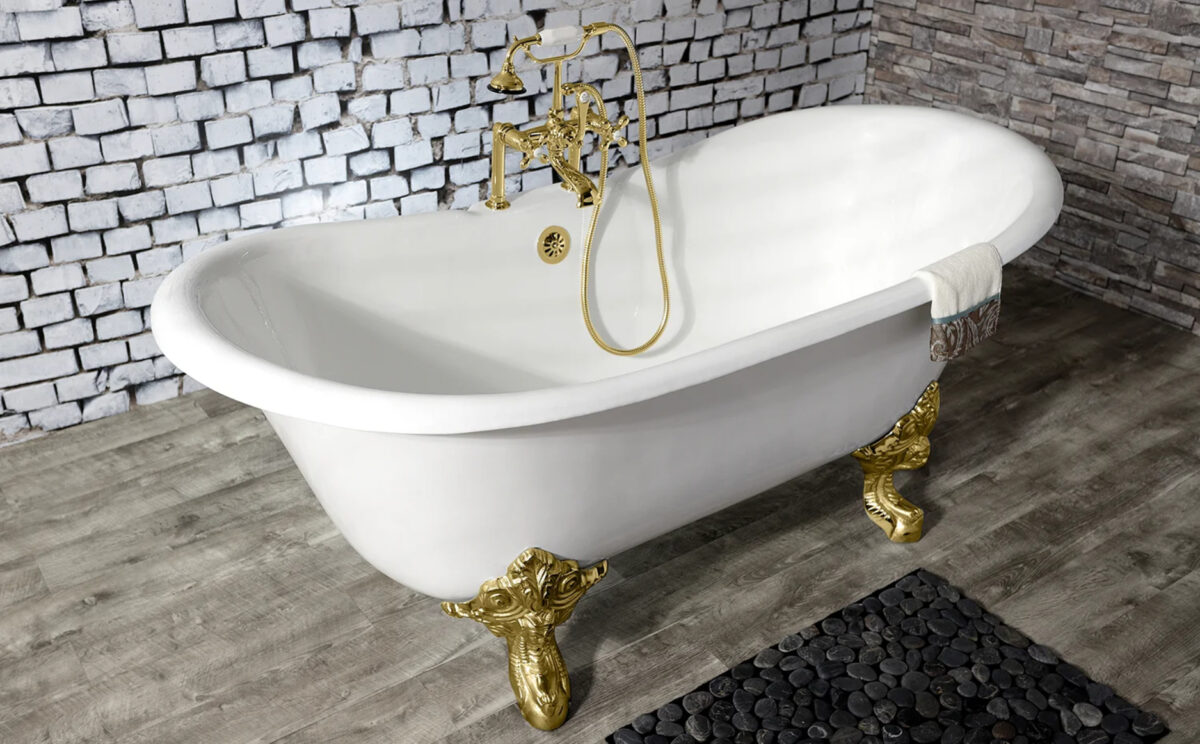
It’s widely held that the clawfoot tub dates back to 18th-century Holland and that its ornate feet were inspired by Chinese dragon motifs. These tubs have long been a favorite in classical bathroom themes, where they make for striking centerpieces.
Many modern clawfoot tubs are acrylic, but they were made of cast iron coated in enamel in their Gilded Age heyday. Cast iron offers superior heat retention once warm, and vintage clawfoot tubs can last generations thanks to their durability. However, these high-quality bathtubs usually weigh hundreds of pounds, potentially complicating installation. It’s also critical to check whether a clawfoot tub includes faucet holes, particularly on cast iron models which cannot be drilled.
Acrylic or cast iron, the tubs’ feet are typically available in black, brass, bronze, nickel, chrome, or white finishes.
Best For: Larger bathrooms in need of a centerpiece benefit greatly from a clawfoot tub.
Our Recommendation: Kingston Brass Aqua Eden Clawfoot Soaking Bathtub – Get on Wayfair for $1,720.14
This luxurious 67-inch cast iron soaking bathtub’s feet come in polished brass, brushed nickel, oil-rubbed bronze, or white options.
7. Jetted Bathtub
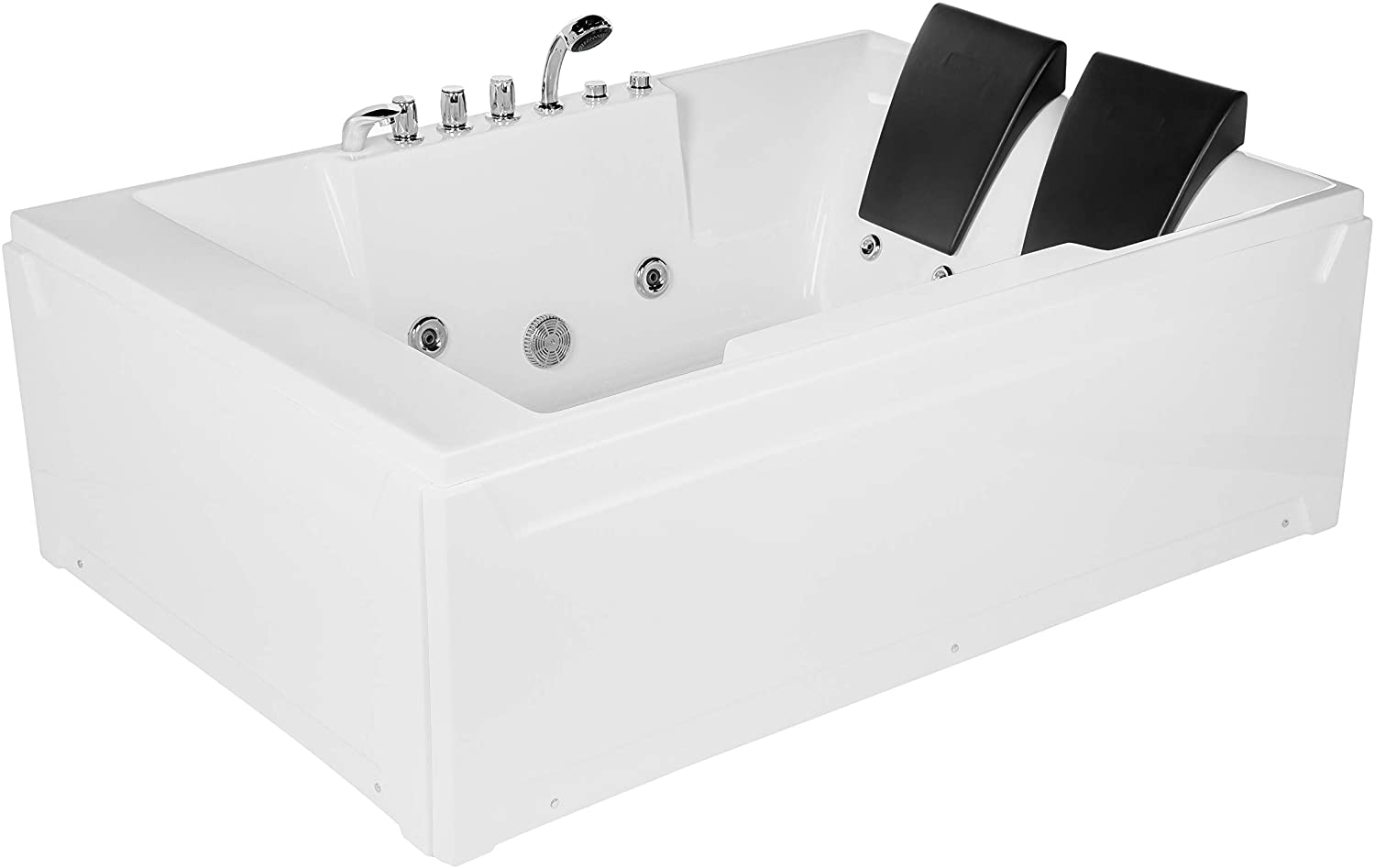
For ultimate bathtime relaxation, it’s difficult to beat a jetted tub. They can soothe away the stresses of the day, massage aching muscles, and are often recommended for joint and muscle pain treatment.
These bathtubs use whirlpool jets, compressed air bubbles, or a combination of the two. The number and position of jets varies considerably and can have a major impact on cost. Additionally, jetted tubs come in a wide variety of styles and sizes. Corner tubs frequently have jets fitted, as do walk-ins. One- or two-person rectangular models (both free-standing and drop-in) are available as well.
The requirements of a tub’s pump need to be considered when planning installation. Knowing how to clean a jetted tub is also key, as the jets may eventually become blocked—especially in areas with hard water.
Best For: A jetted tub will soothe nicely in any bathroom with sufficient space.
Our Recommendation: Empava 2 Person Hydromassage Whirlpool Bathtub – Get on Amazon for $2,257.49
With a length of 72 inches, 10 water jets, and 1.2-horsepower water pump, Empava’s jetted tub offers a spa-like experience at home.
8. Walk-In Bathtub
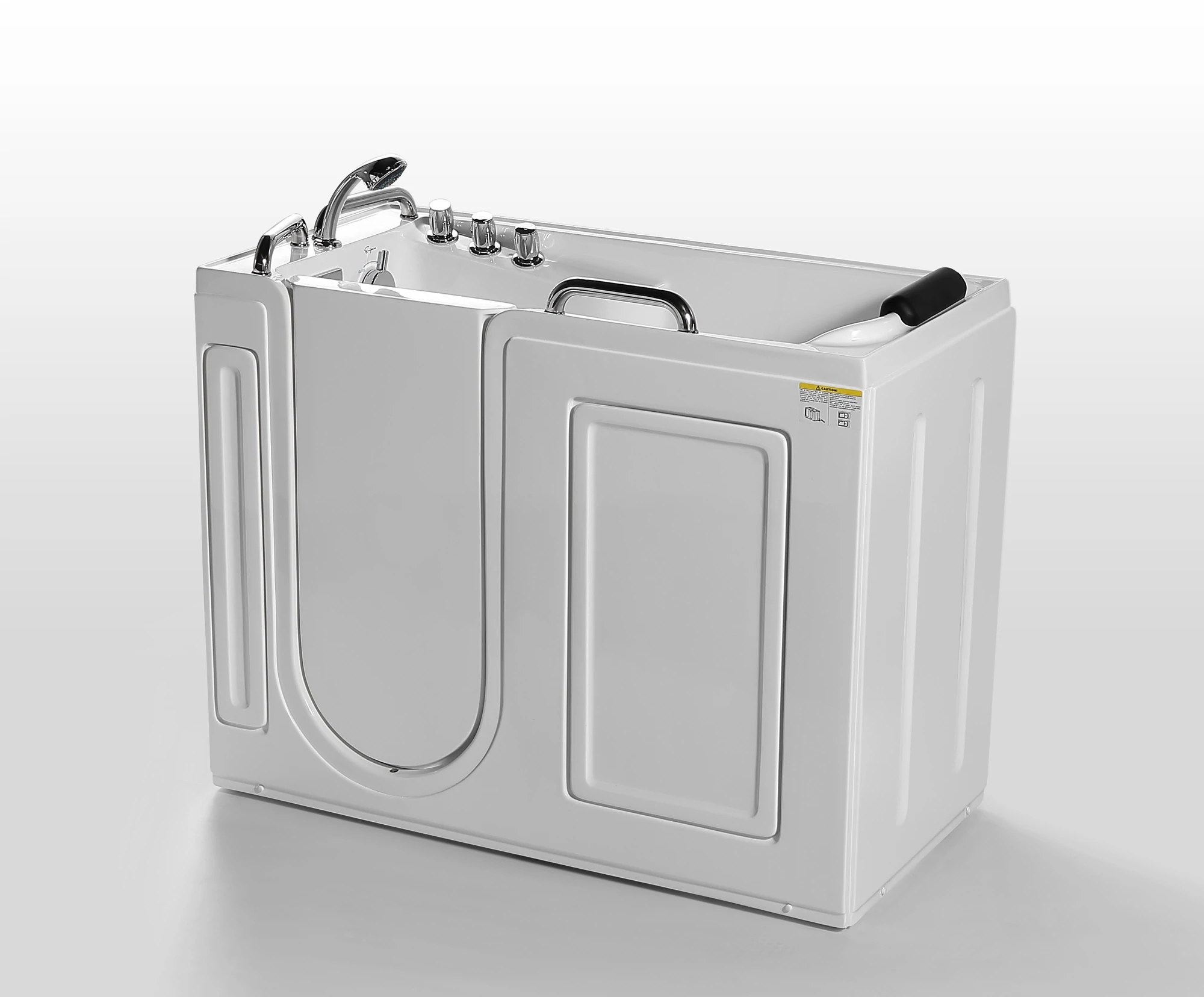
Walk-in bathtubs can be an ideal solution for people with reduced mobility. Their doors open just a few inches off the floor for easy access, the sides are high for an exceptional immersion depth, and a molded seat provides extra comfort. Fittings are regularly included, often with a handheld shower head on an extending hose, while some models incorporate massage jets.
Most walk-in tubs are more spacious than they appear because of their depth, which means they can usually fit in smaller spaces when necessary, with the smallest tub width requiring no more than 4 feet. They can be freestanding or installed in an alcove, giving buyers even more options.
One minor disadvantage of this bathtub type is that the occupant must wait until most of the water has drained before exiting. When comparing walk-in tub models, also be sure to check the door width, as some are narrower than others.
Best For: People with mobility or physical impairments can enter and exit walk-in tubs with ease.
Our Recommendation: Empava Freestanding Walk-In Bathtub – Get on Amazon for $3,022.76
This Empava walk-in bathtub features an extra-wide door, a depth allowing most adults to submerge up to shoulder height, and a step-in threshold of just 4 inches.
9. Japanese Soaking Bathtub

The Japanese soaking tub (also known as ofuro) is intended for relaxation and contemplation. Deep with a built-in seat, they weren’t traditionally used for washing, which would be done separately. Although often cylindrical, contemporary models can be oval, square, or octagonal in shape. They were originally made of wood, but modern Japanese soaking bathtubs come in acrylic, fiberglass, steel, or copper.
Few are more than 4 feet in diameter, so they can be installed in bathrooms of almost any size. However, they are perhaps best appreciated when used as a centerpiece. A central drain is usually provided, but faucets will have to be standalone. Japanese soaking tubs are ordinally between 30 and 36 inches tall, so entering and exiting the bath may not always be a particularly elegant maneuver.
Best For: A Japanese soaking tub will fit right into a bathroom of any size, particularly one with a serene atmosphere.
Our Recommendation: Coppersmith Freestanding Soaking Copper Bathtub – Get on Wayfair for $6,999.99
Coppersmith’s stunning hand-hammered copper Japanese soaking bathtub is available in a premium selection of finishes.
The prices listed here are accurate as of publication on 2/14/22.

